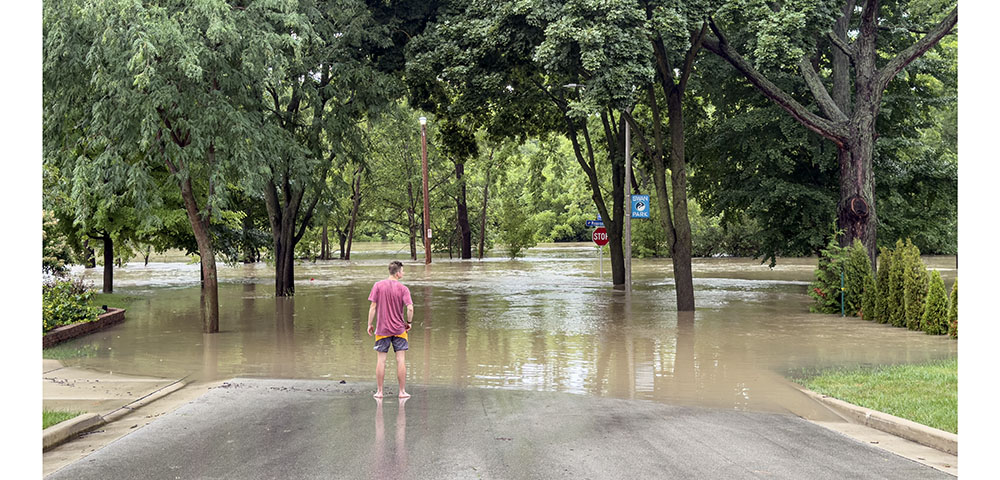
The Record-breaking Menomonee River Flood: Lessons Learned!
August 12, 2025 | Topics: Issues, Spotlight
Eddee Daniel
“The sun shines not on us but in us. The Rivers flow not past, but through us.” – John Muir
Muir’s words take on a new, charged meaning when rivers rise and spill over their banks. We’d been warned. For years scientists have been predicting more severe storms due to climate change. We’ve seen it happen in other places. Hurricanes in the southeast, wildfires across the west…. And yet, the shock is real when disaster comes to your own community.
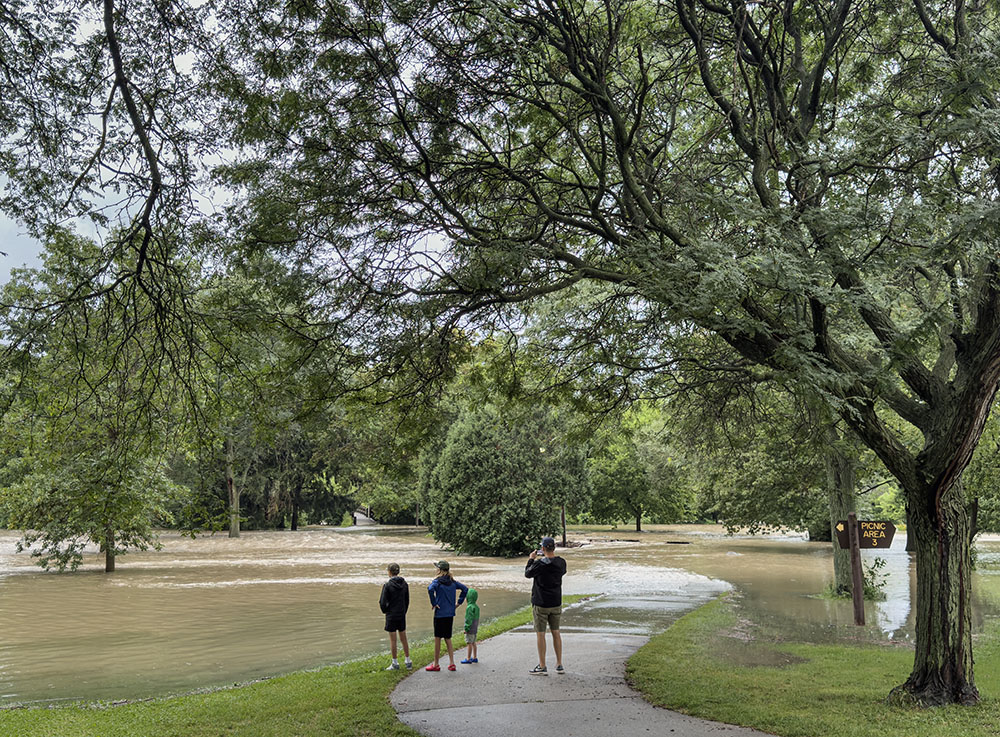
On Sunday, August 10, 2025, I woke to an insistent pounding of rain on the roof. Later, still unaware of the scale of the storm, I hopped in the car and blithely headed for church. I didn’t make it far. At the bottom of our hill, the Menomonee River Parkway was impassably flooded. Police barricades were already in place. The entire width of Hoyt Park was a broad river, seething with brown, sediment-laden water. Neighbors were gathering along the water’s edge, cell phones raised. Children stared in stunned silence.
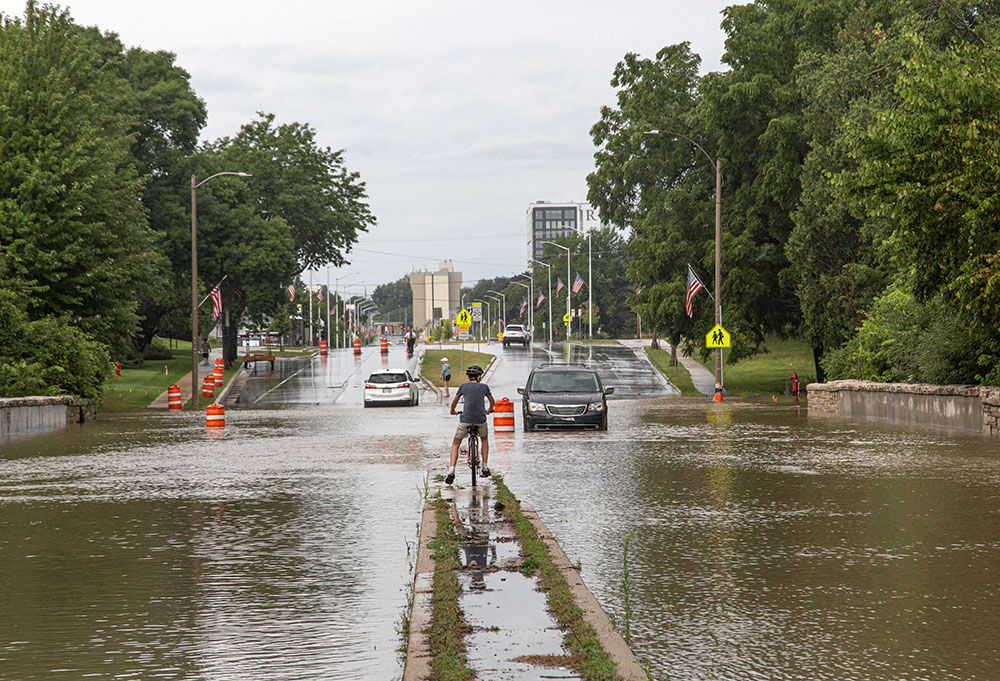
I could see immediately that I would be communing with the river instead of attending church. I spent the next six hours traveling up and down the Menomonee River, from Burleigh Street to the Menomonee Valley, documenting startling scenes. Startling, yes, but not unforeseen. News accounts of the flooding were dire (links below). Emphasis, as can be expected, has invariably been on the record-breaking scope of the rainfall—over a foot reported in some areas—and on the destruction it caused. Video footage concentrated on the worst hit places, such as Wauwatosa’s Hart Park, which is likely to require an extensive (and expensive) clean up.
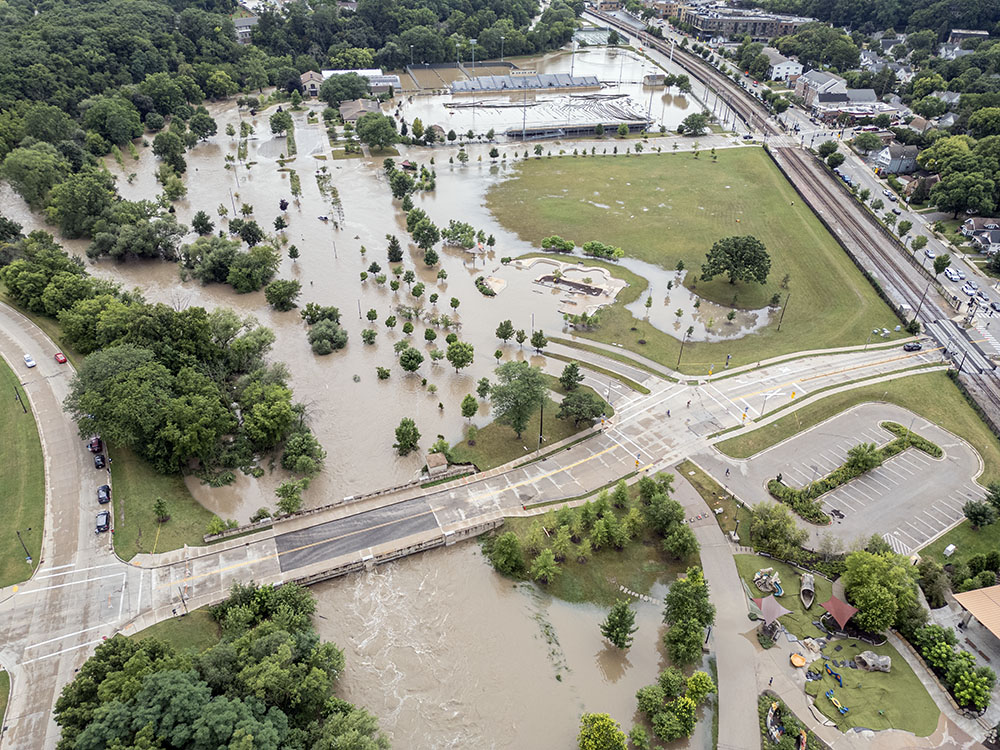
We can be thankful that no fatalities have been reported. Not to minimize the very real damage the flooding caused—many people with submerged cars and flooded basements woke up to a serious catastrophe—but it could have been so much worse! You see, although no one predicted a 1,000-year storm, we were not caught completely unprepared. In fact, the past quarter century has seen enormous improvements in stormwater management all along the Menomonee River, from its headwaters to the harbor. Some of the photographs document how successful many of these improvements have been.
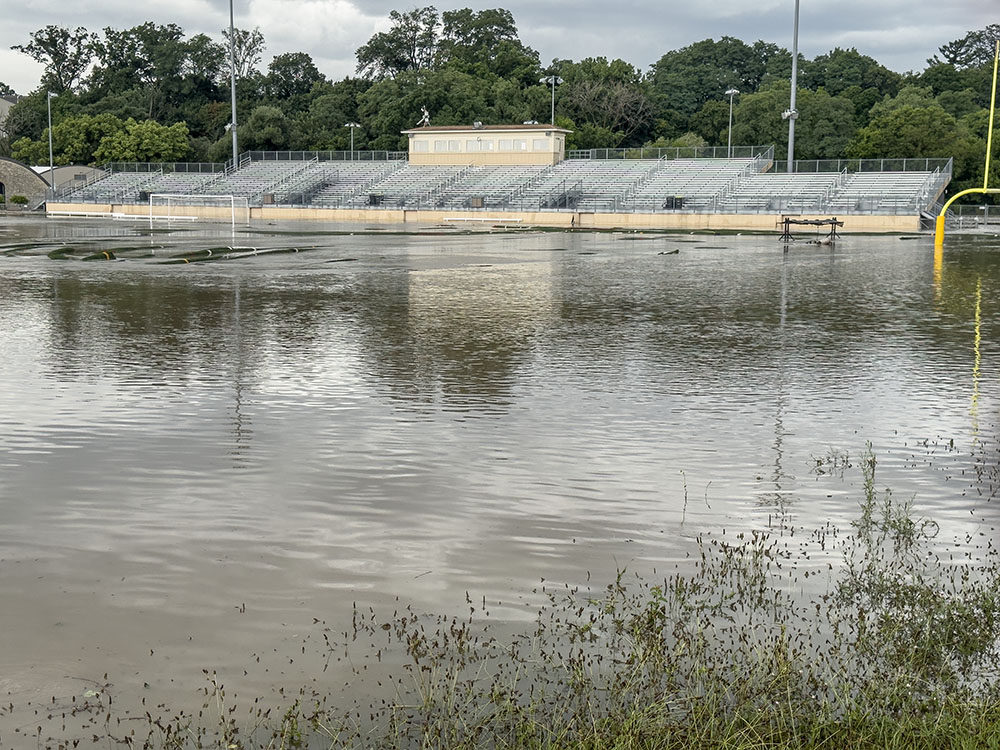
Take Hart Park, for example. Buildings were inundated, playing fields submerged; the artificial turf on the football field looked like corrugated cardboard; and the waterlogged rubbery surface of a playground bulged and wobbled as people hopped about on it, as if in a funhouse. However, believe it or not, Hart Park was designed to flood in a catastrophic storm like this one by the Milwaukee Metropolitan Sewerage District (MMSD), which is responsible for stormwater management.

I remember what it looked like in 1996. What is now the Rotary Amphitheater and playground used to be a residential neighborhood. Back-to-back 100-year floods in 1996 and 1997 ravaged those houses. They were all demolished. The land was added to Hart Park, which was redesigned as a vast holding pond, with flood walls and levees all the way around it to keep the flood waters out of the surrounding neighborhoods. Hart Park flooded … as it was designed to do.
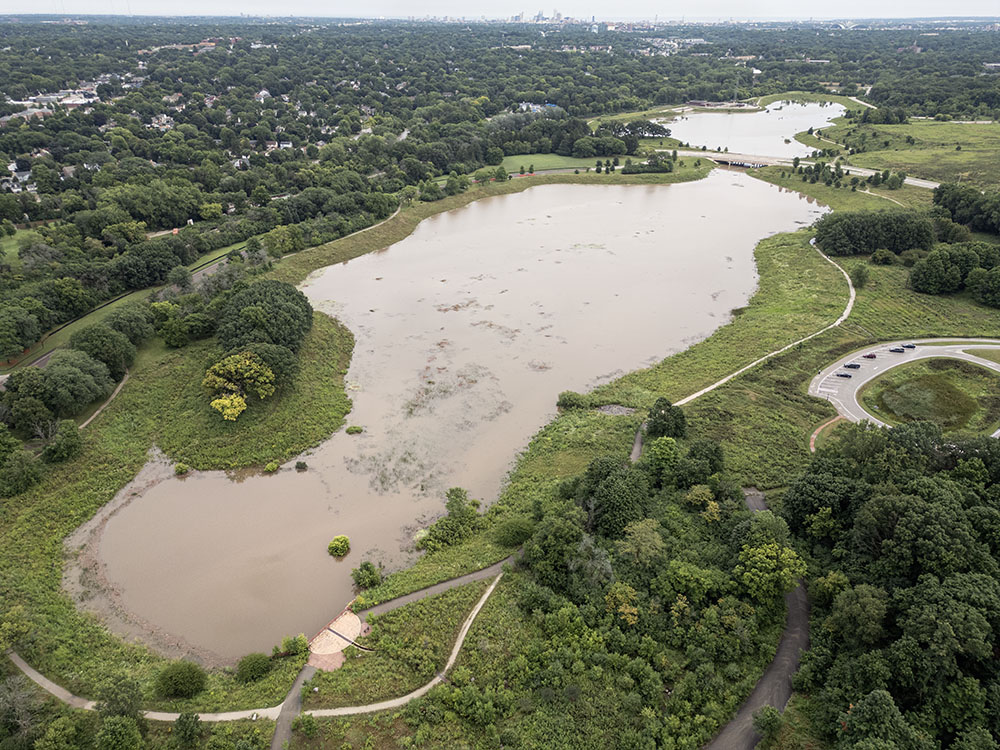
Another success story can be seen on the Milwaukee County Grounds. The deep, 65-acre detention basins there were also a response to the 1996-97 floods. The $90 million project was designed by MMSD to hold up to 315 million gallons of water diverted through a half-mile long tunnel from Underwood Creek. Since they came on line over a decade ago they have rarely, if ever, filled. But they did on Sunday! They are designed to capture water that comes down Underwood Creek from West Allis, Elm Grove and Brookfield in order to keep it from entering the Menomonee River in Wauwatosa during flood events. Once the river flooding subsides, the water in the basins will be pumped into the Menomonee.
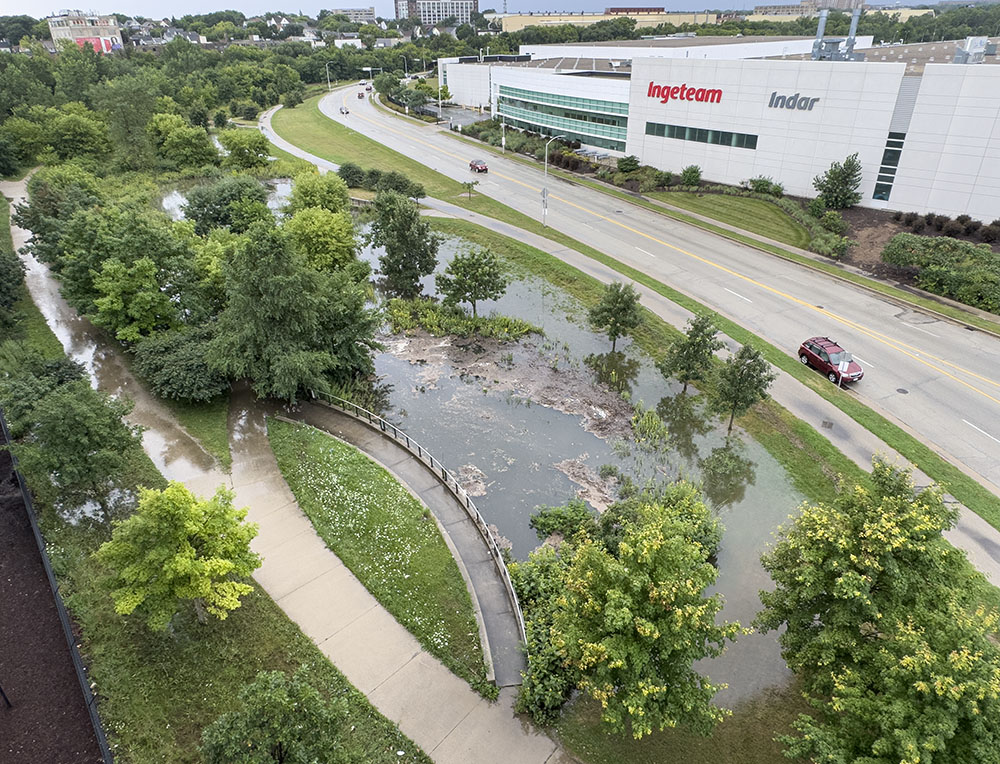
Downstream, near the stadium in the Menomonee Valley, there is a park named Stormwater Park after its function, which is, once again, to contain stormwater. In this case the water runs off the roofs and streets in the adjacent Menomonee Valley Industrial Park. It is held in bioswales where it slowly sinks into the ground, filtering out pollutants, instead of running directly into the river, thus aiding with water quality as well as reducing flooding.
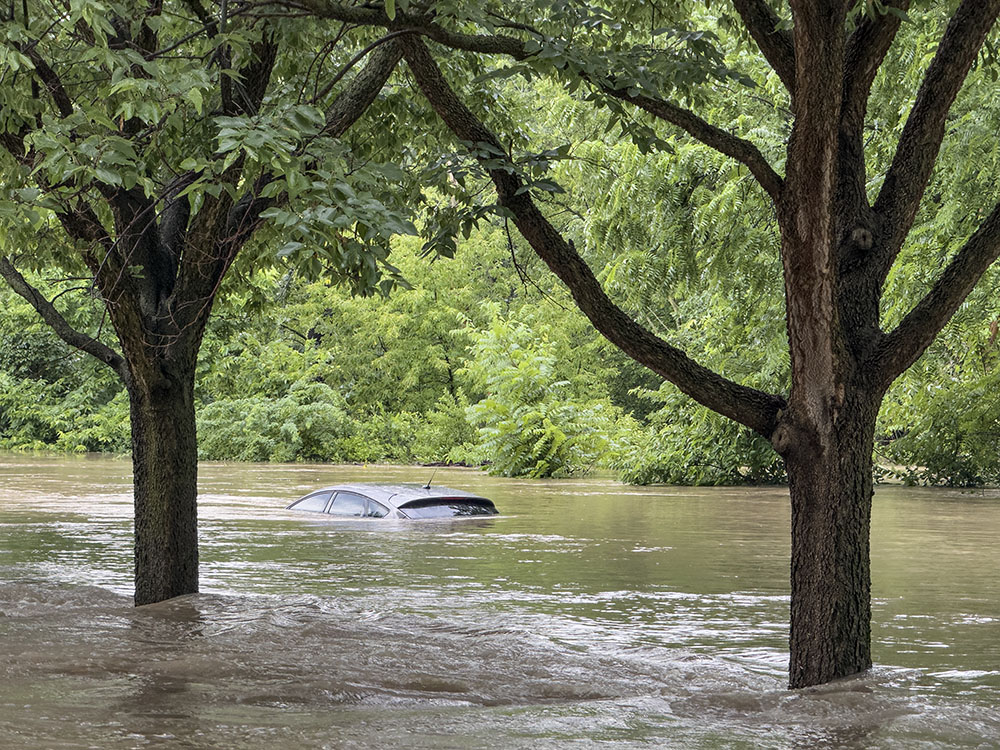
If all of these facilities worked so well, why then was there so much devastation? The big problem on August 10, 2025 was the scale of the event. Most of these projects were designed to contain 100-year stormwater events, not the 1,000-year event that we experienced. (Storms are designated by how likely they are to occur. A 100-year flood can be expected once in 100 years, or, to put it another way, there is a one-percent chance of it happening in any given year.) This is also true of the many other green infrastructure techniques that have been employed, such as the bioswales and raingardens that were incorporated into a redesigned Menomonee River Parkway in 2015.
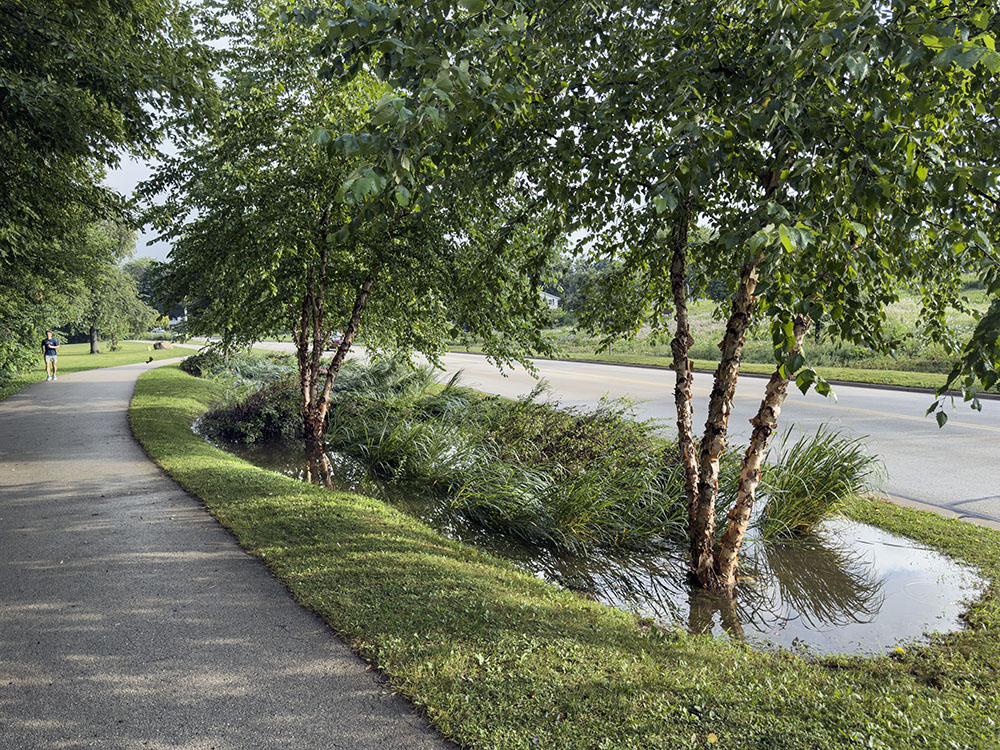
The cumulative effect of the many raingardens that have been constructed all over the Milwaukee area in recent years does help mitigate pollution and normal amounts of flooding. But no raingarden will ever be able to help withstand a river flowing over it several feet deep! Scaling up green infrastructure like rain gardens, porous pavement, and green roofs will continue to help mitigate flooding impacts.
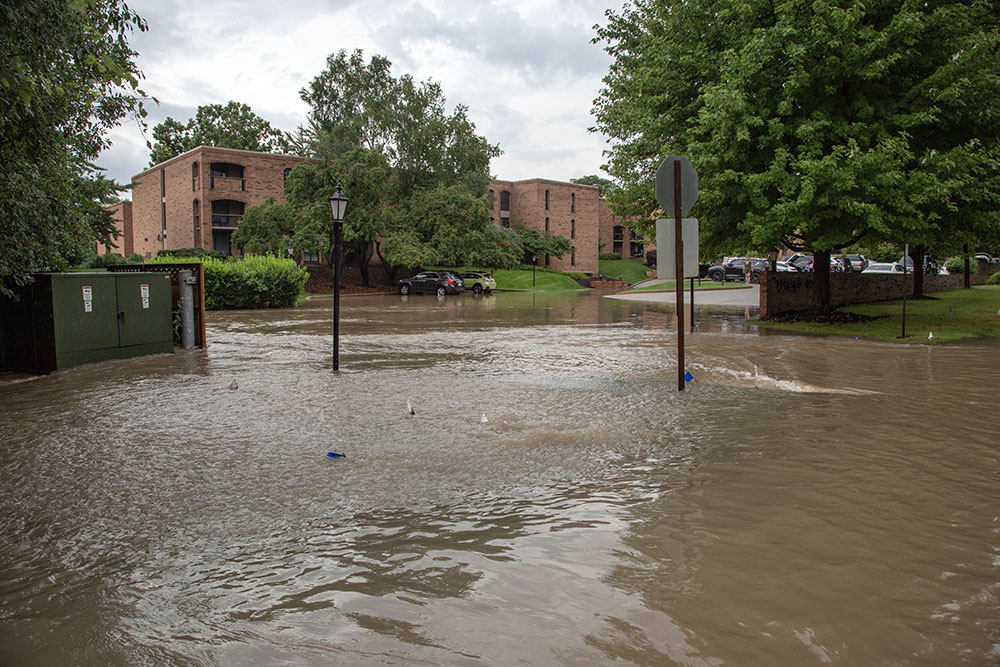
Another way to prevent the kinds of destruction that we saw this week is for state and local governments to bite the bullet and keep all development entirely out of floodplains, floodways, and wetlands, and provide larger vegetated buffers adjacent to rivers and creeks. Furthermore, with the effects of climate change increasing the severity of storms, as well as rising insurance costs, we will have to consider increasing the size of those floodplain zones along rivers from 100-year to 1,000-year (or at least 500-year) events.
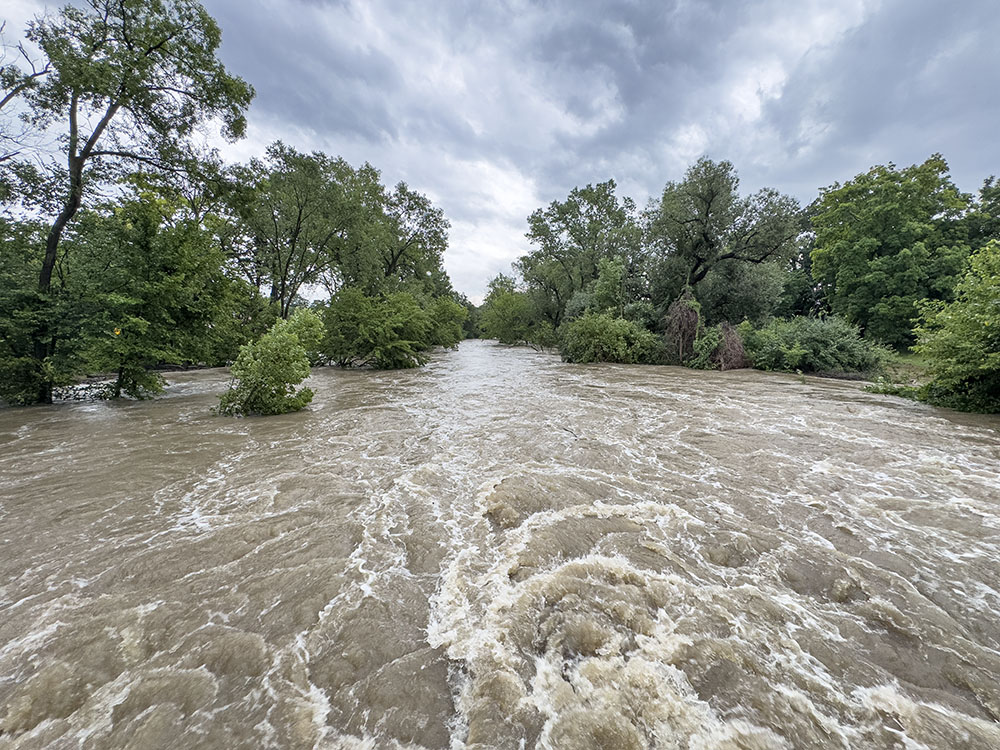
Living next to the river loses its appeal after repeated flooding. I’ve heard it said that “nature bats last.” If we don’t learn to live within nature’s constraints we will be facing more of these problems in years to come. Let’s not expect our luck to hold for another 1,000 years.
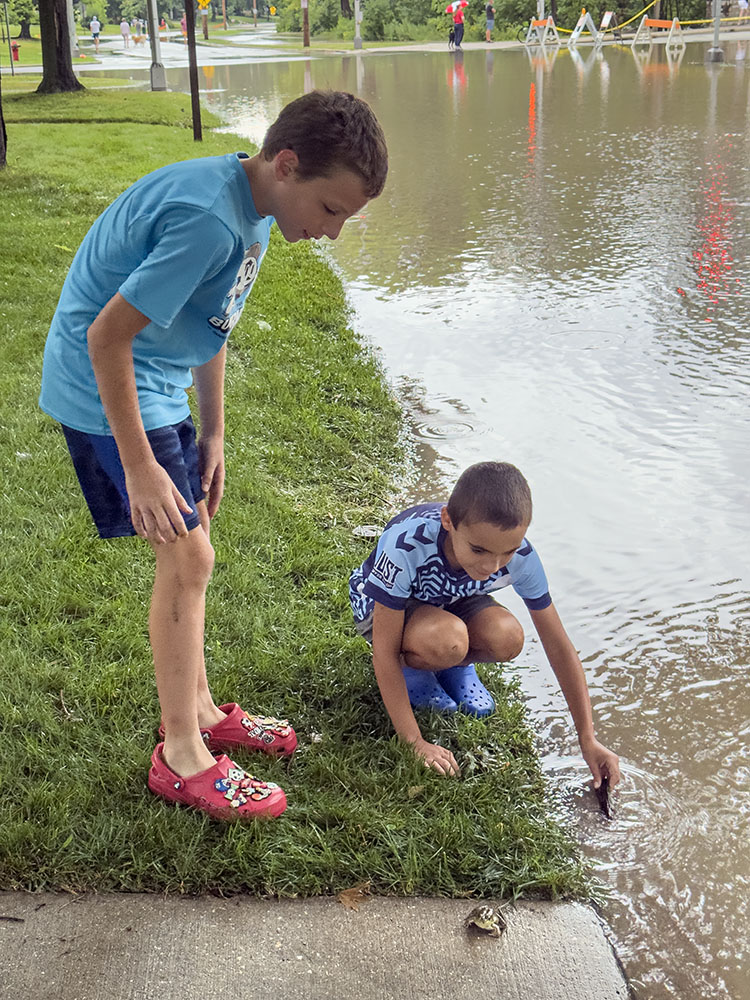
Additional photos can be found in my Menomonee River Flooding Flickr album.
Related stories in The Natural Realm:
Rain Gardens and Bioswales: Beauty as Well as Utility
Island of Nature: Exploring a Blank Spot on the Map of Milwaukee
The flooding in the news:
Wrap up of Aug 10 Milwaukee Journal Sentinel reporting
Heavy rainfall leads to massive flooding in Wauwatosa (WISN News)
City of Wauwatosa in emergency response due to extreme flooding (CBS 58 News)
Southeast Wisconsin severe flooding; Wauwatosa sees major damage (WITI Fox 6)
Wauwatosa residents face unprecedented flooding, as backyards transform into waterways (TMJ4 News)
Record-shattering flood hits Milwaukee County (WI Examiner)
A Look at the Aftermath of the Floods That Hit Milwaukee Last Weekend (Milwaukee Magazine Aug 11)
Weather service official rain totals for Milwaukee show four areas with more than a foot of rain (Milwaukee Journal Sentinel Aug 11)
‘It kept coming’: Residents, across Milwaukee area recount devastating floods, begin cleanup
(Milwaukee Journal Sentinel Aug 11)
Report: Spikes in storm damage, extreme rain increase need for flood insurance (Wisconsin Public Radio Aug 15)
Historic 1,000-year flood led to largest sewer overflow since Deep Tunnel installed (Mke Journal Sentinel Aug 15)
After historic flood and devastating losses, Milwaukee begins a new path forward (Mke Journal Sentinel Aug 15)
Naturalized streams, rivers may have prevented worse flooding. MMSD spent $580 million (Mke Journal Sentinel Aug 15)
For more information about the Menomonee River Parkway go to our Find-a-Park page.
Eddee Daniel is a board member of Preserve Our Parks, a former board member of Milwaukee Riverkeeper, and a former Artist in Residence for Menomonee Valley Partners. The Milwaukee Metropolitan Sewerage District is a project partner of A Wealth of Nature.
About Preserve Our Parks
Preserve Our Parks, Inc. is an independent nonprofit organization dedicated to the preservation of parks and green spaces. Our mission: To advocate for and promote Milwaukee area parks and open spaces and to strive to protect the tenets of Wisconsin’s Public Trust Doctrine.
For more than 25 years, we have been a leader in advocating for the protection of Milwaukee County park lands, halting many proposals to develop, privatize, or sell local parkland and lakefront spaces. More information about POP, including past accomplishments, is available at www.preserveourparks.org.
One thought on "The Record-breaking Menomonee River Flood: Lessons Learned!"
Comments are closed.


Thanks for the great photos and blog, Eddee.